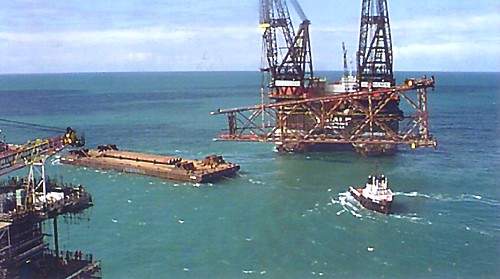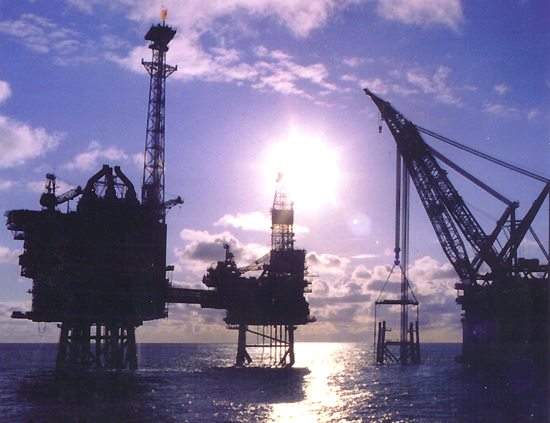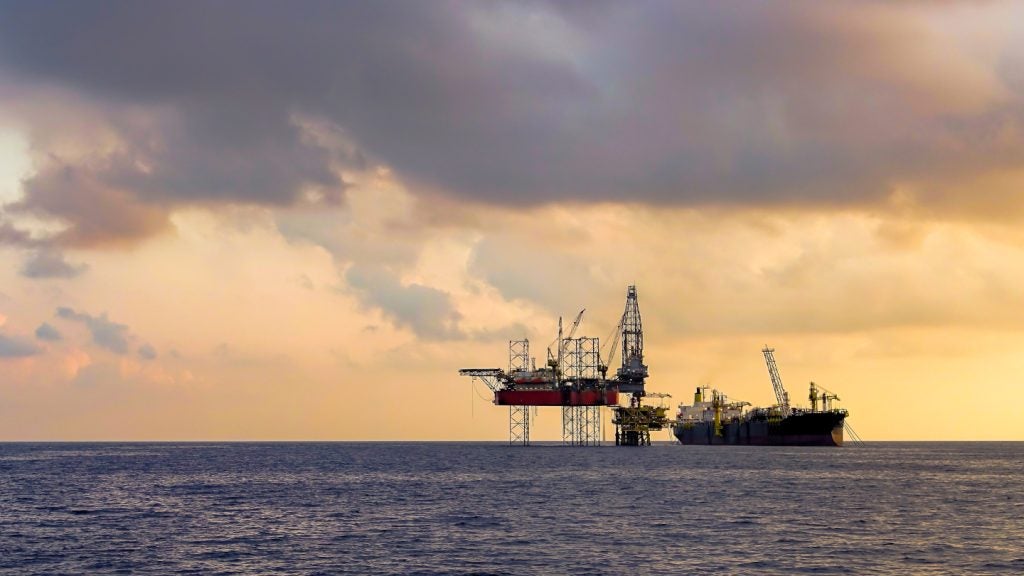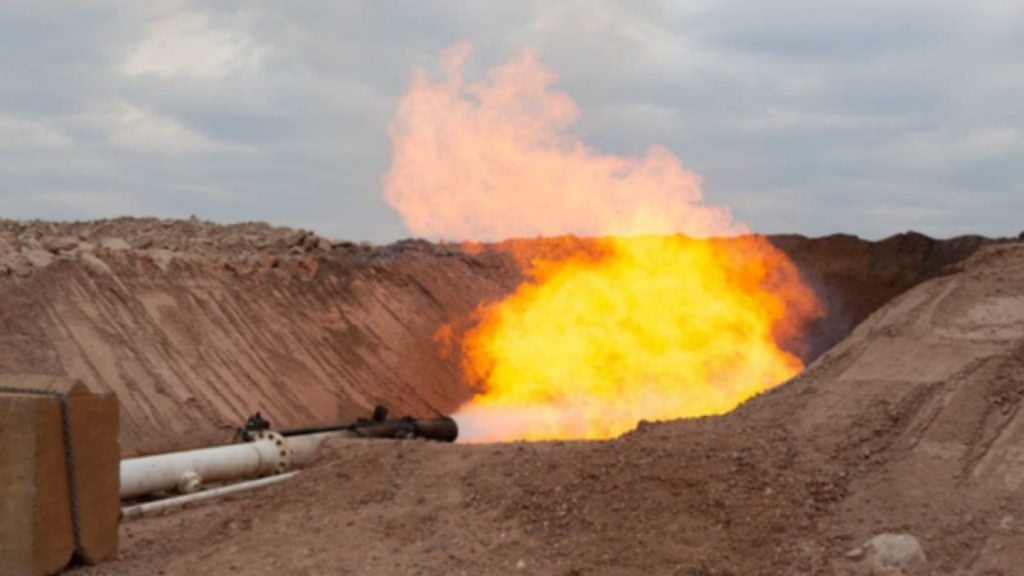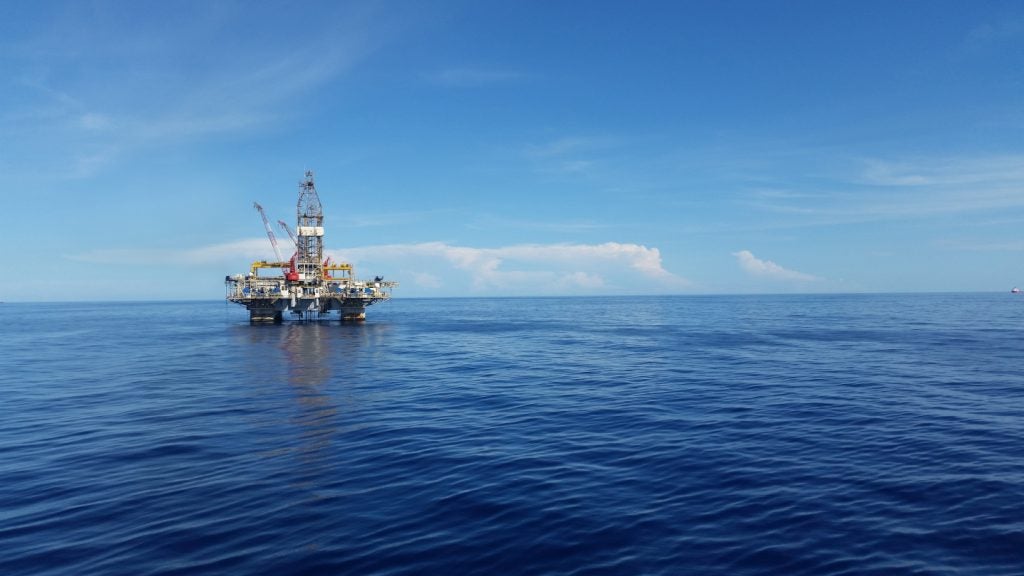The Bruce field was originally developed under phase I, using two bridge-linked platforms, both connected to the main 32in Frigg trunkline by a 6km, 32in-diameter gas-export pipeline taking gas to the St Fergus Terminal.
A 248km, 24in-diameter pipeline was also laid, running to the BP Unity platform, from which oil could be exported into the BP-operated Forties pipeline system.
Phase I Platforms
These two platforms, designated the Process / Utilities / Quarters (PUQ) platform and the Drilling (D) platform, were linked by a 47m bridge.
D platform
The D platform comprises a 9,400t three-level integrated deck, built by RGC. This supports a 7,300t, 36m x 46.3m substructure jacket, built by Dragados.
Oil and gas from the Bruce reservoir is recovered by 11 pre-drilled platform wells, through a 220t drilling template. Up to 21 post-installation wells were specified for the D platform.
PUQ platform
The PUQ platform consists of a 9,400t jacket, supporting three major topside modules.
These are the 8,000t, 55.75m x 32m x 16m cellar deck, built by Eiffel Construction in France, the 44m x 32m x 16m, 7,800t production module, built by Redpath at Teesside and the 43m x 13.4m x 20m, 2,500t accommodation module and helipad, built by SLP at Lowestoft.
Bruce field
The Bruce field is a complex structure of three reservoirs: Turonian limestone (gas condensate), Bruce sandstone (oil and gas condensate), and Statfjord sandstone (oil and gas condensate).
It is a structural trap consisting of several separate accumulations which could eventually need up to 40 wells to produce oil and gas at all reservoir levels. The phase II project was undertaken to fully exploit the reserves.
Phase II
Phase II of the development (previously known as Western Area Development, or WAD) was begun in order to develop the western part of the field. Sanction for this was granted in February 1997.
Phase II accesses an additional 728 billion standard cubic feet of sales gas and 61 million barrels of oil and condensate. The life of phase II has been estimated at 25 years. The production fluids in this part of the reservoir contain less than 3ppm H2S, but 2.8mol% of CO2.
With individual wells expected to produce up to 120mscfd, maximum throughput is set at 450mscf/d of gas and a total of 50 million bpd of condensate, as well as 20 million bpd each of produced water and oil. Gas delivery was specified by the Western Area reservoir group at rates of 250mscf/d and 480bar.
The project scope is a 13-well scheme, with eight wells tied directly to a manifold (four to the north and four to the south). The design includes five further wells integrated by means of a separate manifold or daisy-chain connection.
The 213t subsea manifold was constructed at Barmac’s Ardersier yard and transported to the Rockwater bundle site at Wester Ross. It was then attached to a 5.7km bundled pipeline system, weighing 6,000t, the heaviest of its kind in the North Sea.
This manifold is tied back to a new Compression Reception (CR) platform, which houses a 25MW, 500bar, 500mscf/d gas reinjection compressor, which is located in a 2,700t module. It is used for gas recycling and reservoir pressure support.
A major facilities upgrade was completed in the third quarter of 2000, involving the introduction of a further stage of compression on all three compressor trains. This upgrade allows a reduction in the wellhead flowing pressure of the wells, maintaining deliverability at plateau flow rates. The design also included six future risers to be retrofitted, which will allow future tie-ins in other areas of the Bruce field, as well as in nearby third-party fields.
The new CR platform has also been provided with the capacity for an additional module, which was installed in 2004. The new module was installed to provide reception facilities for Rhum field fluids, which commenced production in 2005, and an additional stage of gas compression with two low-pressure booster compression trains, which allow a further reduction in wellhead flowing pressure and should enable an additional 100 billion standard cubic feet of gas to be recovered from Bruce.
Installation
The 3,200t steel jacket was installed in mid-1998. It was followed soon after by the 2,750t topsides.
Bruce field Phase II Production
Phase II started with an initial flow rate of over 110 million standard cubic feet a day of gas, and 14 million barrels a day of liquids. By the end of 1996, the Bruce partnership had spent £1.25bn developing the field. The addition of the Phase II development brought the total investment in the field to £1.6bn.
Drilling continued until 2003, after which production started to decline and now ullage will become available in all parts of the platform facilities over the next few years.




